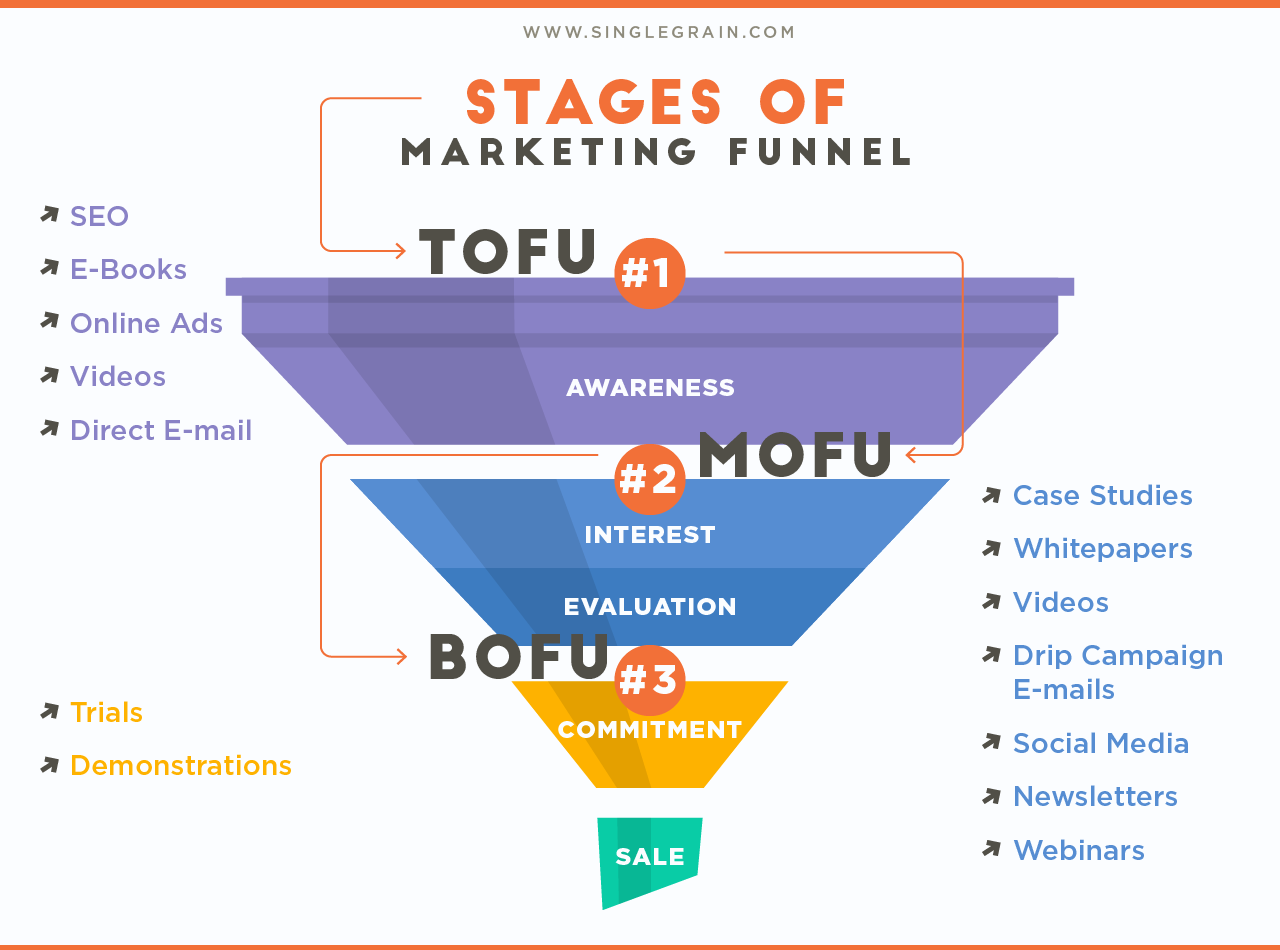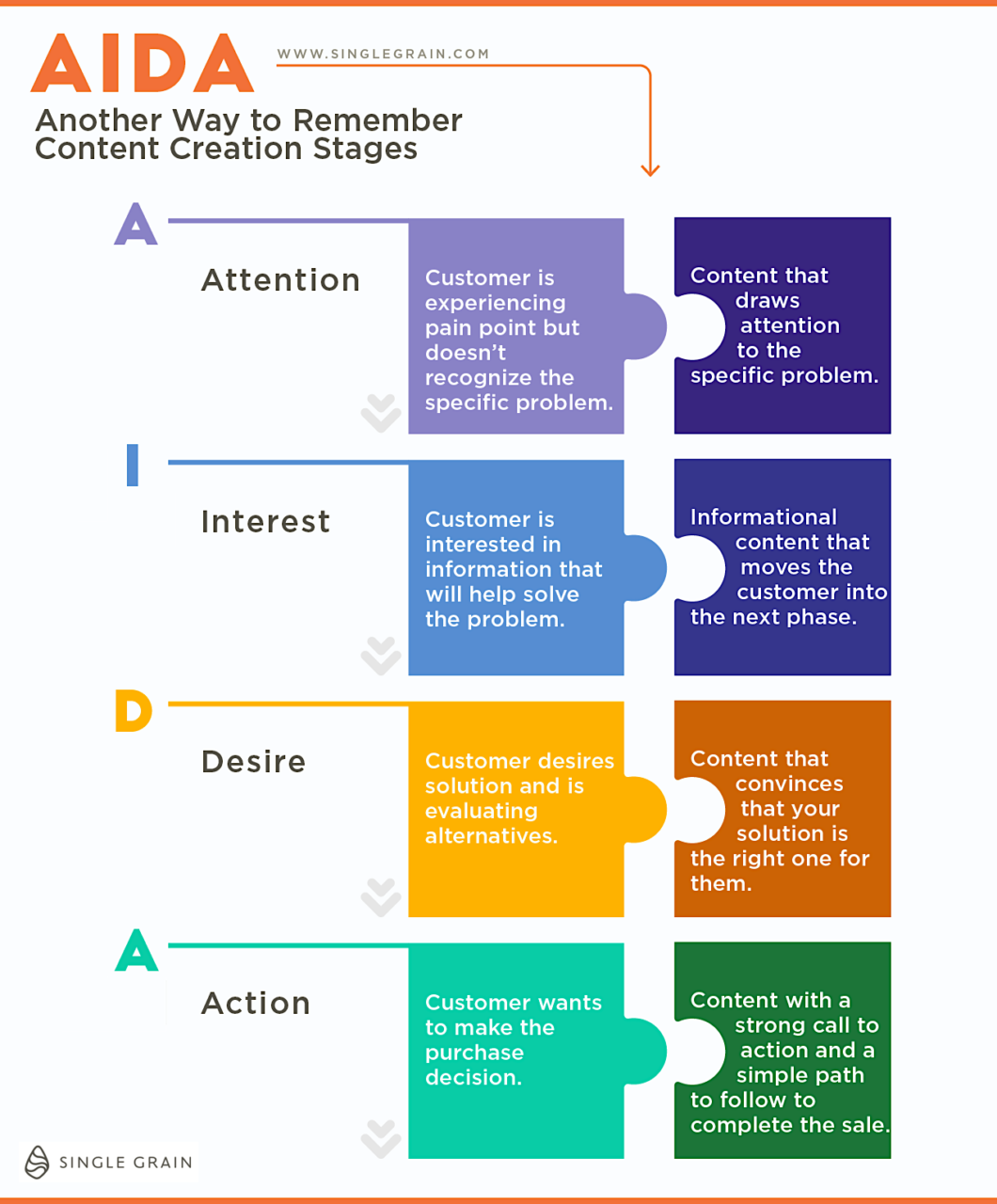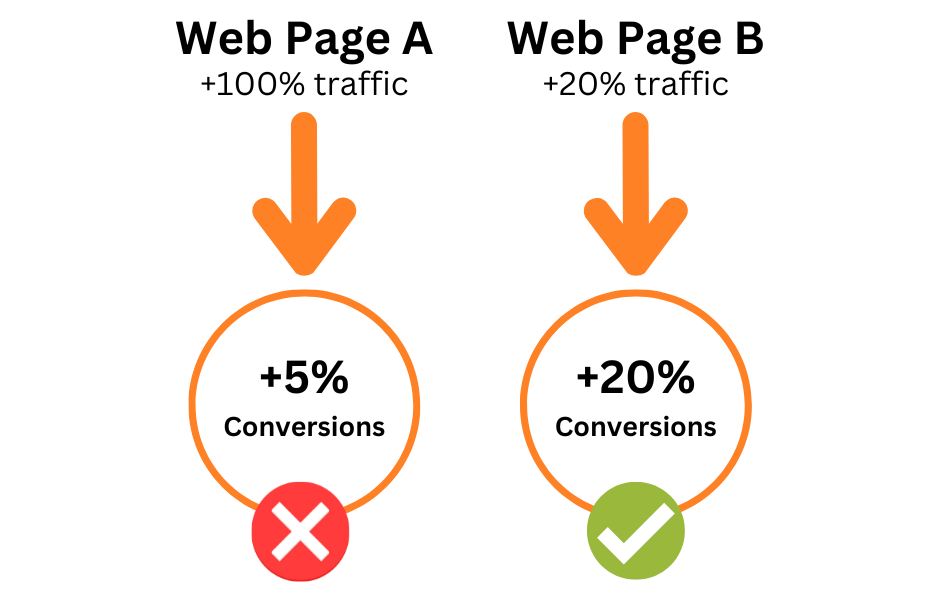In the world of digital marketing, many businesses obsess over increasing traffic to their websites.
However, amassing loads of traffic isn’t all it’s cracked up to be. Merely attracting more visitors doesn’t guarantee higher revenue.
To truly drive business growth, it’s crucial to prioritize conversions — the actions that are actually tied to revenue, such as signups and purchases.
In this post, we’ll delve into the reasons why you should prioritize conversions over traffic and share strategies and best practices to optimize conversions effectively.
Why We Go After Conversions Over Traffic
Why do we prioritize conversions over traffic?
It all comes down to one fundamental goal: generating revenue.
When we optimize our strategies for conversions, we’re essentially aligning our efforts with what truly matters in the business world. While increasing traffic may seem enticing at first glance, putting conversions at the forefront allows us to identify the sources that truly drive tangible business outcomes.
In this pursuit, tools like Google Analytics come to our aid, letting us review the effectiveness of various traffic sources in converting mere visitors into valuable customers. Instead of solely focusing on doubling our traffic while only seeing marginal improvements in conversions, we understand that the real impact lies in achieving proportional growth in both traffic and conversions.
When you focus strictly on conversions, you not only maximize revenue generation, but you also make the most efficient use of your resources. It’s a strategy that recognizes the value of quality over quantity, ultimately leading to a more fruitful and sustainable business path.
The Costly Mistake of Prioritizing Traffic
The danger of prioritizing traffic without considering conversions is a costly mistake that many businesses fall victim to. It’s easy to get caught up in the allure of increasing traffic numbers, but the truth is, if those visitors aren’t converting into customers, you’re essentially pouring resources down the drain.
This mistake becomes even more pronounced for startups and businesses operating on limited resources, as every allocation decision becomes crucial for growth.
When it comes down to it, it’s essential to focus on bottom-of-the-funnel (BOFU) and middle-of-the-funnel (MOFU) keywords — the ones that are closer to the conversion stage. These keywords have the potential to attract visitors who are more likely to convert into customers.

When you direct your resources toward targeting these keywords, you can optimize your efforts and increase your chances of driving actual conversions.
Remember, it’s not just about the numbers; it’s about the quality of those numbers. Prioritizing conversions over traffic allows you to make smarter decisions, allocate resources effectively, and ultimately achieve sustainable growth for your business.
Strategic Keyword Targeting for Conversions
Strategic keyword targeting holds the key to driving a reliable conversion engine. It’s a nuanced art that involves understanding the different types of keywords depending on the funnel stage and their impact on generating conversions:

- At the top of the funnel, we have “top-of-the-funnel” keywords. These are like broad signposts that attract a wide range of people who are just starting their exploration. For example, think of a keyword like “best SEO tools of 2023.” It grabs attention, creates awareness, and leads people to where they need to go. It’s about casting a wide net and getting your brand in front of as many eyes as possible.
- As we move further down the funnel, we encounter “middle-of-the-funnel” keywords. These are like checkpoints along the journey, where users are actively seeking information and comparing different options. Imagine someone searching for “Nike vs Addidas.” They’re comparing two brands and are likely weighing their pros and cons.
By targeting these kinds of intermediary keywords, you can engage users in their decision-making process and provide them with the information they need to make an informed choice.
The Importance of Tracking Relevant Metrics
It’s all too easy for businesses to get caught up in tracking metrics that may seem important at first glance but ultimately have little impact on the bottom line. We often refer to these as “vanity metrics” – they may look impressive on a report, but they don’t directly contribute to revenue generation. One such example is the bounce rate.
While it’s tempting to obsess over reducing bounce rates, if it doesn’t correlate with increased revenue, it’s simply a distraction from what truly matters.
So, what metrics should you be focusing on?
The answer lies in tracking the ones that directly tie to your business’s success. Metrics such as conversion rates, revenue generated, and customer acquisition are substantially more helpful in understanding the real impact of your efforts since they are closer related to actual buying intent.
For instance, if you double your traffic but you only get 5% more conversions, it doesn’t matter as much as if you increase your traffic by just 20% but get 20% more conversions:

For instance, conversion rates provide a clear picture of how successful you are in turning visitors into paying customers. It’s a metric that directly reflects the effectiveness of your marketing and sales efforts.
Similarly, tracking the revenue generated allows you to measure the actual financial impact of your activities. After all, revenue is the lifeblood of any business, and it’s crucial to have a pulse on how your efforts are translating into tangible returns.
Moreover, customer acquisition is another vital metric to keep tabs on. Understanding how effectively you’re attracting new customers and expanding your customer base is key to sustainable growth. If you monitor this metric closely, you can gauge the success of your marketing campaigns and customer acquisition strategies.
In the end, it’s essential to resist the allure of superficial indicators that fail to move the needle on your business’s bottom line.
Related Content: 9 Mission-Critical Lead Generation Metrics You Need To Track
Last Comments on Why We Optimize Conversions Over Traffic
To achieve sustainable growth and maximize revenue, you have to shift your focus from a traffic-centric mindset and instead optimize conversions. By pursuing actions that lead to revenue, you can allocate resources effectively and get a significantly higher ROI from your marketing dollars.
Remember, it’s not just about attracting more visitors — it’s about converting them into loyal, recurring customers.
So ditch the belief that you need more traffic, because you don’t. Focus on conversion optimization strategies and follow best practices tailored to your specific marketing revenue goals.
If you’re ready to level up your conversions, Single Grain’s CRO experts can help!👇
Repurposed from our Marketing School podcast.






